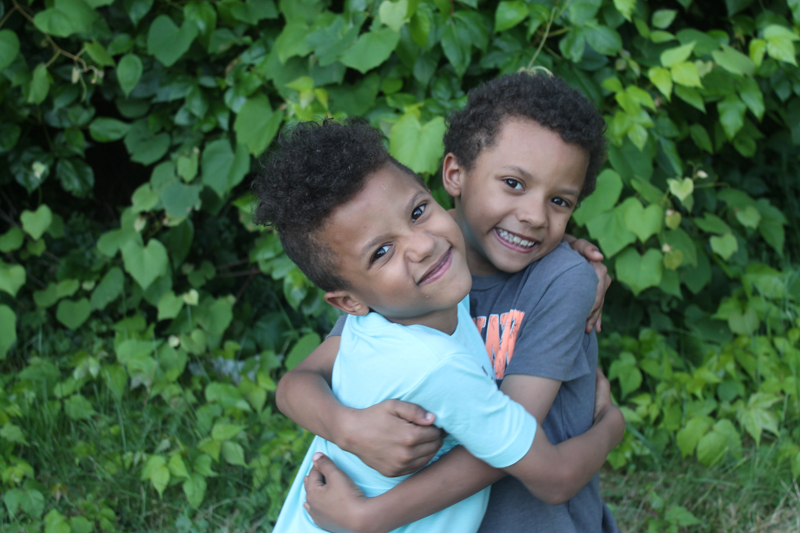Section 2: Family Life
122 Parent & Caregivers: Tips for Siblings
As many families know, balancing time equally among multiple children is a difficult task. This task may feel nearly impossible if at least one of your children has ASD, but finding a balance is both possible and important. Siblings of individuals with ASD face many challenges which can lead to feelings of isolation from their family and friends, confusion, fear, anger and possibly even embarrassment about their sibling. However, research supports that, in most cases, siblings of kids with autism grow up to be strong, compassionate and emotionally mature.
 Explain Autism Spectrum Disorder
Explain Autism Spectrum Disorder
The siblings’ need for knowledge is just as important as those of their parents because they need to have the ability to identify with their sibling. The information that you share with them can put any fears and concerns into perspective as well as limit any embarrassment and uncertainty. Think about the age and learning level of the siblings so that you can provide information that will be most easily understood. Younger children may just need to know how some brains just work a little differently. Older children may wish to know more. Let your child set the pace for how much information they need. The information they learn from you may also empower them to explain ASD to their friends.
Provide a private space
Create a safe place in your home for siblings to access whenever they need a break from the individual with ASD, family or activities. Taking breaks will enable the sibling to relieve some pressure, decrease stress, and remove him/herself from the issues and behaviors surrounding the individual with ASD.
Spend time with each child
This can be challenging but can be accomplished with support of friends and family. Even if the time spent is not long, it is important that it is predictable, rewarding, and involves choice for the sibling.
 Provide support
Provide support
All children need to have a life beyond the home. Siblings can be social with peers through play or group activities. Activities should be individualized to the sibling’s interests and provide opportunities for attention and focus unrelated to their sibling with a disability. Alternatively, if it is so desired, sibling support groups can be helpful in that they provide an opportunity to meet friends who are experiencing similar situations, concerns and questions.
Communicate
Encourage an environment of open communication. Some children will bring up thoughts and concerns on their own and others will wait for the topics to be brought up by someone else. Some children may worry if they can catch ASD and other children may worry about their role presently as well as when the sibling gets older. Either way, children need to know that sharing their thoughts, feelings, and concerns about the sibling with ASD is ok.
Set realistic expectations
Be honest with siblings and let them know when you need help. However, also talk to your children about what/how they would like to be involved. Respect their need to be alone and ask them if and how they would like to help the family. Children need to be provided opportunities to be involved and help in their own way, but also need permission to be children.
Teach how to play and interact
Help your children understand ways to play or interact with their sibling. It can be as simple as reading a book or helping with chores. This will allow them to feel needed while also bonding with their siblings. Further, involvement in play and other activities will help them to learn more about ASD in their sibling and ways that they can support the sibling in completing tasks and activities.
Resources
Moyson, T., Roeyers, H. (2011). The quality of life of siblings of children with autism spectrum disorder. Exceptional Children, volume 78 (1), 41-55.
Macks, R. J. & Reeve, R. E. (2007). The adjustment of non-disabled siblings of children with autism. Journal of Autism & Developmental Disorders, volume 37 (6), 1060-1067.
Elder, J.H., & D’Alessandro, T. (2009). Supporting families of children with autism spectrum disorders: Questions parents ask and what nurses need to know. Pediatric Nursing, volume 35 (4), 240-253.
Jones, E. A., Fiani, T., Stewart, J. L., Sheikh, R., Neil, N., & Fienup, D. M. (2019). When One Sibling has Autism: Adjustment and Sibling Relationship. Journal of Child and Family Studies, 1272–1282. https://doi.org/10.1007/s10826-019-01374-z
Orsmond, G. I., & Fulford, D. (2018). Adult Siblings Who Have a Brother or Sister with Autism: Between-Family and Within-Family Variations in Sibling Relationships. Journal of Autism and Developmental Disorders, 48(12), 4090–4102. https://doi.org/10.1007/s10803-018-3669-8
Shivers, C. M. (2019). Empathy and perceptions of their brother or sister among adolescent siblings of individuals with and without autism spectrum disorder. Research in Developmental Disabilities, 92(May), 103451. https://doi.org/10.1016/j.ridd.2019.103451
